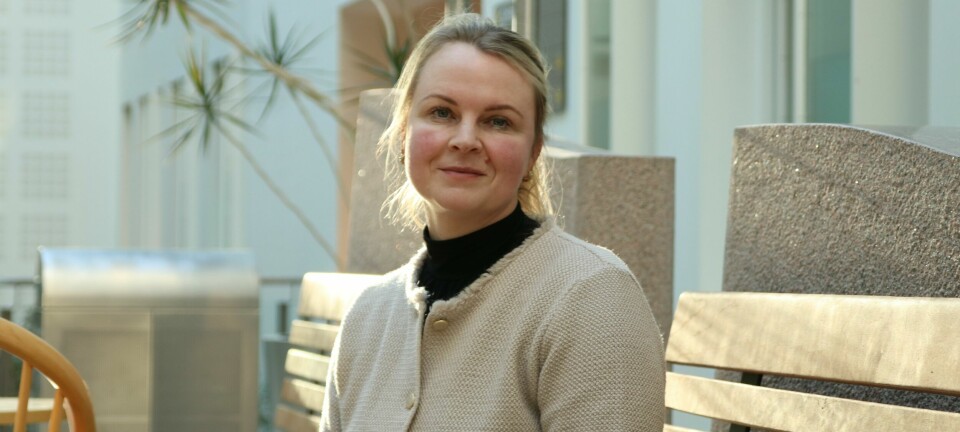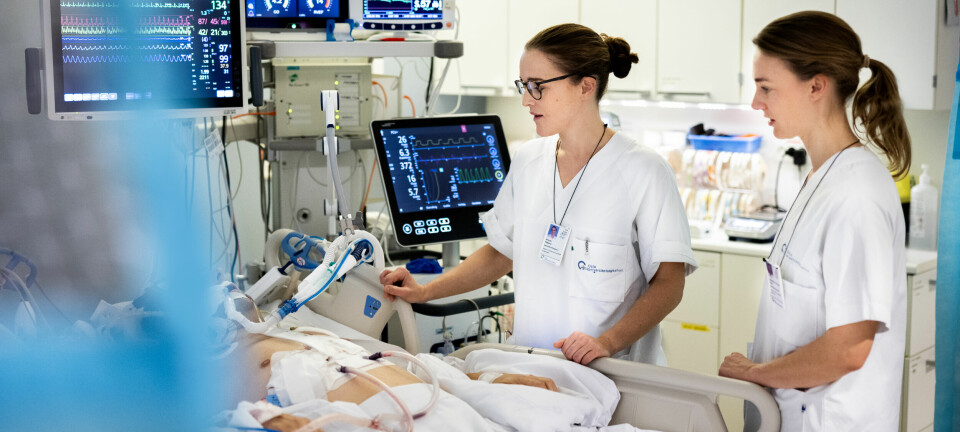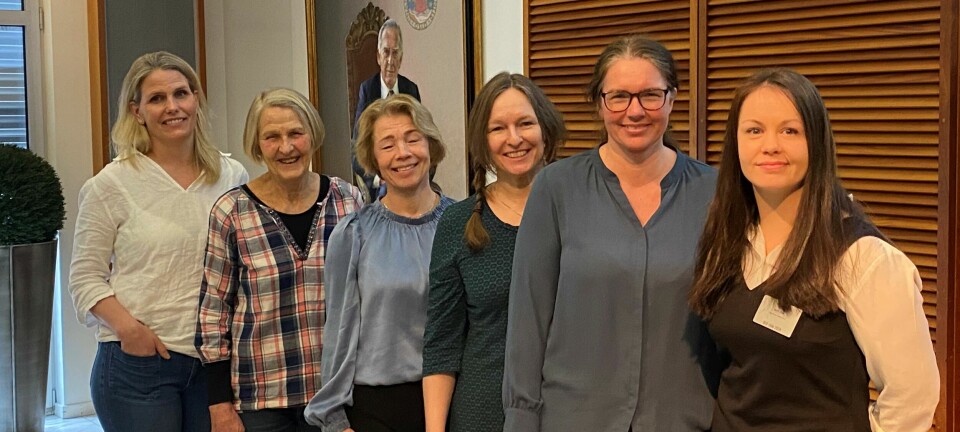
Fagessay
Milestone mafia or a tribute to diversity? Perspectives on typical motor function in infancy
Fagessay.
Kine Melfald Tveten, spesialist barne- og ungdomsfysioterapi (MNFF). Ph.d.-stipendiat ved Høgskulen på Vestlandet. kine.mefald.tveten@hvl.no.
Dette fagessayet ble akseptert 5.oktober 2020. Fagessay vurderes av fagredaktør. Ingen interessekonflikter oppgitt. Prosjektet dette fagessayet er basert på finansieres av Fond til etter- og videreutdanning av fysioterapeuter og Høgskulen på Vestlandet
“Jimmy is all around the house, it is difficult to keep track of him!”, Jimmy’s mom says in a cheerful tone. The maternity group is gathered once again. Five 8-month old infants and their moms. They chat about feeding, sleeping, diapers, and motor milestones. One of the infants, little Heather, is not crawling around, and her mum Sarah feels a certain pressure. Seeing the infants together, it is obvious that her daughter is not as active as her peers, which rise her concerns. Why isn’t Heather moving around? Will she ever get up from that floor? Am I doing something wrong? She wonders anxiously.
Being in Sarah’s shoes is an unpleasant feeling, and these shoes have been worn by many parents before. The doubt of the development of one`s own precious children is an unpleasant feeling most parents can recall. Looking at this situation from an outside perspective raises several questions and thoughts: Is the acceptance for diversity when it comes to motor function and development in children too narrow? Is this diversity a problem, and if so, for whom? And how can we understand it?
Lifelong competition
Some people might see all aspects of life as an endless competition. It starts at the first breath: What was the length and weight of the baby? When did you see the first smile, at what age did they say their first word? Being prior in a field is seen as a strength. To compare and compete with peers is a natural affair and a social inherent instinct. Thus, the race of attaining motor milestones can be understood as one of many competitions in life. My experience after assessing more than 600 infants in my PhD-project, is that parents seem proud of having children that are ahead of their motor developmental schedule, while parents of infants with a slower development kind of apologize on behalf of their infants, describing them as lazy. As a pediatric physiotherapist I have the knowledge and experience of the broad diversity in typical motor development. However, I also meet the infants and children with established motor difficulties, who struggle with simple everyday tasks and play activities. When they enter school and physical education, they are often lagging behind in play, need more time for dressing or have difficulties kicking or catching a ball.
Motor development cannot be distinguished from psychological development as these two constructs are fundamentally related. New motor skills create new opportunities for exploration and learning that initiate cascades of development across diverse psychological domains (1). The development of gross motor abilities, has been shown to influence infants’ independence and self-care. For example, walking without assistance is followed by emotional changes reflecting autonomy and assertiveness, promoting social skills and attachment (2). Research has pointed that children with good motor skills are more popular and serve higher status than children with poor motor skills. Further, children with poor motor skills are less likely to be included in play, which in turn leads to a vicious circle of less movement experiences and less experiences in social interaction (3). Hence, children with motor precocity might have a head start in developing social relationships and friendships, which in turn nourishes the competition of motor development.
Milestone mafia
Several parents have experienced comments from the neighbour next-door that their child is not walking yet, while all the three sons of the neighbour attained independent walking before they ate their first birthday cake. The media and providers of merchandise has a notion of what is within typical development, or what is healthy. Economic profit is probably a motive for narrowing the window of typical development when they encourage you to buy all kinds of aids to promote crawling, walking, reaching and talking. Parents are surrounded by inputs on the plea and expectations of motor development by a milestone ‘mafia’. However, humans are not pre-programmed robots that will develop in a fixed way. The evidence tells us that there are big between-individual variability regarding pace and trajectory of motor development, and the trajectory is not linear (4). Even if the motor development the first two years of life is a rapid process, it happens in various tempo. Perhaps it can be seen as the different gaits of a horse. Sometimes, motor development is slowed like in walking, and in some periods, it goes in the tempo of full gallop. Sometimes, the motor development seems to be paused, while other aspects of development are present, like communication and social emotional skills. Back to the horse metaphor, the popularity of a thoroughbred racing horse seems to trump the calm draft horse. Do we have a similar tendency among ourselves, favouring the rapid developing infants?
Naming is framing
The way we word ourselves when it comes to motor function, both as professionals and laymen, may nourish the exaltation of rapid motor development. We have admiration and recognition in our voice when we talk about the children who are early in the achievement of motor milestones. A mother once told me about the reactions from colleagues as she brought her early walking daughter to work: “Amazing! She is definitely a smart girl!”, the colleagues commented. Contrary, there is seldom cheerfulness when you hear about infants who takes their time and have a slower trajectory. The voice of the neighbour next door asking if your child has started to walk yet is wondering, perhaps even judgmental. Or is it only us parents who perceive it that way because we are vulnerable of criticisms towards our children?
Motor difficulties
“Diversity in motor development is not a problem, they all learn to walk anyway” some would say. But in contrast, it might play a role in later in life if the child is lagging behind. Delayed achievement of motor milestones may be one of the first indicators for motor impairments, but can also be a marker for more global developmental disorders (5). As a physiotherapist, I have met these children and experienced how their motor difficulties may be accompanied with social and emotional difficulties, learning difficulties and risk of bullying. Motor difficulties are often identified at school entry, as this is where the struggles have impact on their daily life, like writing, play and sports activities. Nevertheless, this does not mean that their motor difficulties were not present earlier, and also that their difficulties were not detectable at an earlier point. In a follow up study of children with motor difficulties, the authors concluded that: “we were definitely wrong in believing that mild to moderate problems would have little or no clinical importance in the long run”(6). Hence, the diversity in motor function may be a lifelong problem for the individual. An important question is whether we as a society are complicit in the creation and the maintenance of this problem? And if so, how can we deal with it?
Time to act?
With the proper measures, smaller developmental delays can be detected at an early stage both in high risk, and low risk infants (7). One side of early identification is access to a time slot for early intervention. The term “early” is questionable. At what time are we talking about? The development of the brain in the first two years of life is a critical period, and thus probably a good therapeutic window for early motor stimuli (8). Thus, it’s possible that intervention in this period would be more effective than an intervention at a later point. Brain plasticity justifies early intervention – however – the brain is plastic throughout our lifespan. What if an infant with suspected, mild motor difficulties will catch up with its peers, if he just gets enough time? (9).
And if early intervention was suggested; how comprehensive should an intervention for infants with suspected motor difficulties be? The comprehensiveness of an intervention may be dependent on the severity of the delay or difficulties, but how people rate severity is probably highly subjective.
An alternative perspective - gender-biased motor performance?
Can gender be involved when motor function and its diversity are understood and valued? In addition to the biological difference between the sexes, gender can be understood as identity, symbols and structure. At all these levels, which are affected by material, sociocultural and socio-economic factors, we find conditions that influence health and development (10).
Identity is gendered and our self-understanding is developed in a constant interaction with what the environment connects to femininity and masculinity. The environment is contributing when motor skills are developed and we are all present in a gendered environment. What is considered feminine or masculine are deeply hierarchical, where the latter most often is considered superior (11). Motor behaviour is often divided between gross and fine motor skills, where the latter includes grasping and manipulating small toys, dressing and the use of cutleries. These are activities often achieved earlier in girls than boys, yet, there seems to be put more emphasis on the acquisition of rolling walking and jumping. Why are we more interested in gross motor skills than fine motor skills? An obvious first thought is that gross motor behaviour is much more visible. Walking is clear and obvious skill while a pincher grasp is barely noticed. Later in life, in school and academia, writing rather than running fast or jumping high would be more important. Nevertheless, the gross motor skills seem to be valued more in infancy.
Gender can be present in culturally produced symbols or adjectives. Masculinity may be aggressive, ambitious, self-confident, athletic, strong, independent and competitive. Femininity may be loving, mild, sensitive, shy, understanding, warm, gentle and tender. In terms of motor behaviour, early achievement of motor milestones may be seen as masculine and if so, we need to critically appraise how we rate or evaluate motor function. As a woman, and mother of a girl, I am always already embedded in our cultural understandings of appropriate gendered behaviour. This prompts me to inquire into how a gender bias can be detected, and critically appreciated and acted upon.
It might seem odd to discuss how gender are influencing motor function in young infants, but studies have shown how the behaviour of parents alters when the sex of the baby is known (12) and throughout life, the infant and its parents are shaped and informed on values and behaviour.
Norms - spaciousness to include or just problematic?
It is questionable whether Heather in our opening story are in fact lagging behind compared to her peers in the maternity group. Or even more important; when compared to a representative norm reference sample. If children develop their psycho-motor skills and capacities in dissimilar ways, when is the correct age to compare and contrast? When are comparisons or contrast useful and when do they harbour potential harm? The primary goal of creating a normative data set (as I do in my PhD project) is to allow the comparison of an individual, to a large group of people, matched for their age, sex and clinical background. Hence, this allows for something to be said about the individual’s level of development at a particular time point (13). In Sarah’s case, her idea of what is typical is probably formed based on the few infants in the maternity group, or the parents who highlights children who are early in their development. This is problematic because it is not representative. The suggested size on normative data is dependent on which statistical method is used to calculate it, but one sure thing is that they are usually quite extensive. As an example, the Bergen Growth study that examined height, weight and head circumference in children age 0-19 years had a sample of 8312 individuals (14). Having norms for typical motor development may seem reassuring for parents, as their children’s motor function most likely will be found at a given, accepted percentile. Everyone wants there best for their offspring, and the desire to be proud of one’s children is probably an inherent trait. Likewise, as part of our social being, doing and belonging, we have a desire to participate in a social community. In the case of motor function; we do not want our children to be outside the norms of what is regarded as typical development, as this might threaten our sense of fellowship.
Are there more to motor function than predetermined motor milestones?
Mother Sarahs worries turn in to action, and she contacts the local well-baby center in her municipality. This is where you come in, the physiotherapist. How do you meet this anxious mother? What is your evaluation based upon?
We must be aware of our roles as professionals. Our opinions are taken seriously, and will have consequences. In the clinician’s toolbox, there are several assessment tools available. The theoretical background the measures are developed upon may vary, and likewise their application, need of training and clinometric properties. The ability to roll, crawl and sit is important, but probably less important is the time the infant manage these milestones. However, if an assessment of motor function is solely based on the achievement of motor milestones, there should be an equal sign between early achievement of motor milestone and good motor function. Yet, I believe most health care professionals agree that motor function is a bit more complex.
A recent developed clinical measure is the Infant Motor Profile (IMP), (15) a novel tool assessing spontaneous motor behavior in infants from 3-18 months. In contrast to many other measures applied, the IMP assess not only motor milestones, but it goes with the name, a motor profile. This profile includes variation, adaptability, fluency and symmetry in motor behaviour. Evaluating a child’s motor profile instead of just their motor milestones provides a broader view of movement and what motor function can be. Hence, it brings an overview of the child's movement resources, which can be important in a later intervention. Additionally, the qualitative aspects of movement (variation, adaptability and fluency) seem crucial, as they are markers for an infant’s developmental outcome (16). The psychometric properties of the IMP are supported by evidence (17, 18) and seems promising in early identification of motor difficulties. However, the measure does not yet have norm representative data for the Norwegian population, which calls for further research.
Comparing a child’s motor function to a representative norm can be valuable, provided that the norms are truly representative. The plea for early achievement of motor milestone may be understood from different perspectives, and the pressure for fitting in to norms are probably created and kept alive by society and our social practice. Regarding motor development of non-risk, more or less healthy infants, it is tempting to suggest an emerging understanding that we are in a hurry. But more interesting to ask: what are we rushing for?
References
1. Biringen Z, Emde RN, Campos JJ, Appelbaum MI. Affective reorganization in the infant, the mother, and the dyad: the role of upright locomotion and its timing. Child Dev. 1995;66(2):499-514.
2. Adolph KE, Hoch JE. Motor Development: Embodied, Embedded, Enculturated, and Enabling. Annu Rev Psychol. 2019;70:141-64.
3. Sigmundsson H, Haga M. [Children and motor competence]. Tidsskr Nor Laegeforen. 2000;120(25):3048-50.
4. Adolph KE, Franchak JM. The development of motor behavior. Wiley Interdiscip Rev Cogn Sci. 2017;8(1-2).
5. Noritz GH, Murphy NA, Neuromotor Screening Expert P. Motor delays: early identification and evaluation. Pediatrics. 2013;131(6):e2016-27.
6. Gillberg IC, Gillberg C, Groth J. Children with preschool minor neurodevelopmental disorders. V: Neurodevelopmental profiles at age 13. Dev Med Child Neurol. 1989;31(1):14-24.
7. Harris SR. A plea for developmental motor screening in Canadian infants. Paediatr Child Health. 2016;21(3):129-30.
8. de Graaf-Peters VB, Hadders-Algra M. Ontogeny of the human central nervous system: what is happening when? Early Hum Dev. 2006;82(4):257-66.
9. Pickler E, Tardos A. Laßt mir Zeit. Die selbständige Bewegungsentwicklung des Kindes bis zum freien Gehen. München: Pflaum; 2001.
10. Getz L, Kirkengen A, Ulvestad E. The human biology-saturated with experience. Tidsskrift for Den norske legeforening. 2011;131(7):683-7.
11. Heise L, Greene ME, Opper N, Stavropoulou M, Harper C, Nascimento M, et al. Gender inequality and restrictive gender norms: framing the challenges to health. Lancet. 2019;393(10189):2440-54.
12. Mesman J GM. Gendered parenting in early childhood: subtle but unmistakable if you know where to look. Child Dev Perspect. 2018;12:22-7.
13. O'Connor PJ. Normative data: their definition, interpretation, and importance for primary care physicians. Family medicine. 1990;22(4):307-11.
14. Júlíusson P, Bjerknes R. Bergen Growth Study 1 and 2 2014 [Available from: http://www.vekststudien.no/forskningsprosjekt/.
15. Heineman KR, Bos AF, Hadders-Algra M. The Infant Motor Profile: a standardized and qualitative method to assess motor behaviour in infancy. Dev Med Child Neurol. 2008;50(4):275-82.
16. Hadders-Algra M. Variation and variability: key words in human motor development. Phys Ther. 2010;90(12):1823-37.
17. Heineman KR, La Bastide-Van Gemert S, Fidler V, Middelburg KJ, Bos AF, Hadders-Algra M. Construct validity of the Infant Motor Profile: relation with prenatal, perinatal, and neonatal risk factors. Dev Med Child Neurol. 2010;52(9):e209-15.
18. Tveten KM, Hadders-Algra M, Strand LI, Van Iersel PAM, Rieber J, Dragesund T. Intra- and Inter-Rater Reliability of the Infant Motor Profile in Infants in Primary Health Care. Phys Occup Ther Pediatr. 2020;40(5):571-81.
























